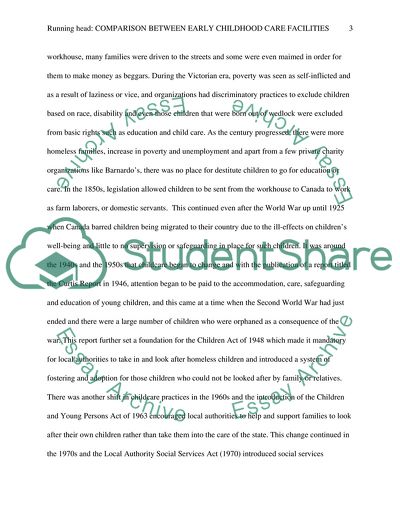Cite this document
(Comparison between Early Childhood Care Facilities Coursework Example | Topics and Well Written Essays - 3500 words, n.d.)
Comparison between Early Childhood Care Facilities Coursework Example | Topics and Well Written Essays - 3500 words. https://studentshare.org/education/1877362-compare-and-contrast-the-quality-of-3-early-years-provisions-montessori-nursery-sure-start-children-centrer-primary-school-nursery
Comparison between Early Childhood Care Facilities Coursework Example | Topics and Well Written Essays - 3500 words. https://studentshare.org/education/1877362-compare-and-contrast-the-quality-of-3-early-years-provisions-montessori-nursery-sure-start-children-centrer-primary-school-nursery
(Comparison Between Early Childhood Care Facilities Coursework Example | Topics and Well Written Essays - 3500 Words)
Comparison Between Early Childhood Care Facilities Coursework Example | Topics and Well Written Essays - 3500 Words. https://studentshare.org/education/1877362-compare-and-contrast-the-quality-of-3-early-years-provisions-montessori-nursery-sure-start-children-centrer-primary-school-nursery.
Comparison Between Early Childhood Care Facilities Coursework Example | Topics and Well Written Essays - 3500 Words. https://studentshare.org/education/1877362-compare-and-contrast-the-quality-of-3-early-years-provisions-montessori-nursery-sure-start-children-centrer-primary-school-nursery.
“Comparison Between Early Childhood Care Facilities Coursework Example | Topics and Well Written Essays - 3500 Words”. https://studentshare.org/education/1877362-compare-and-contrast-the-quality-of-3-early-years-provisions-montessori-nursery-sure-start-children-centrer-primary-school-nursery.


